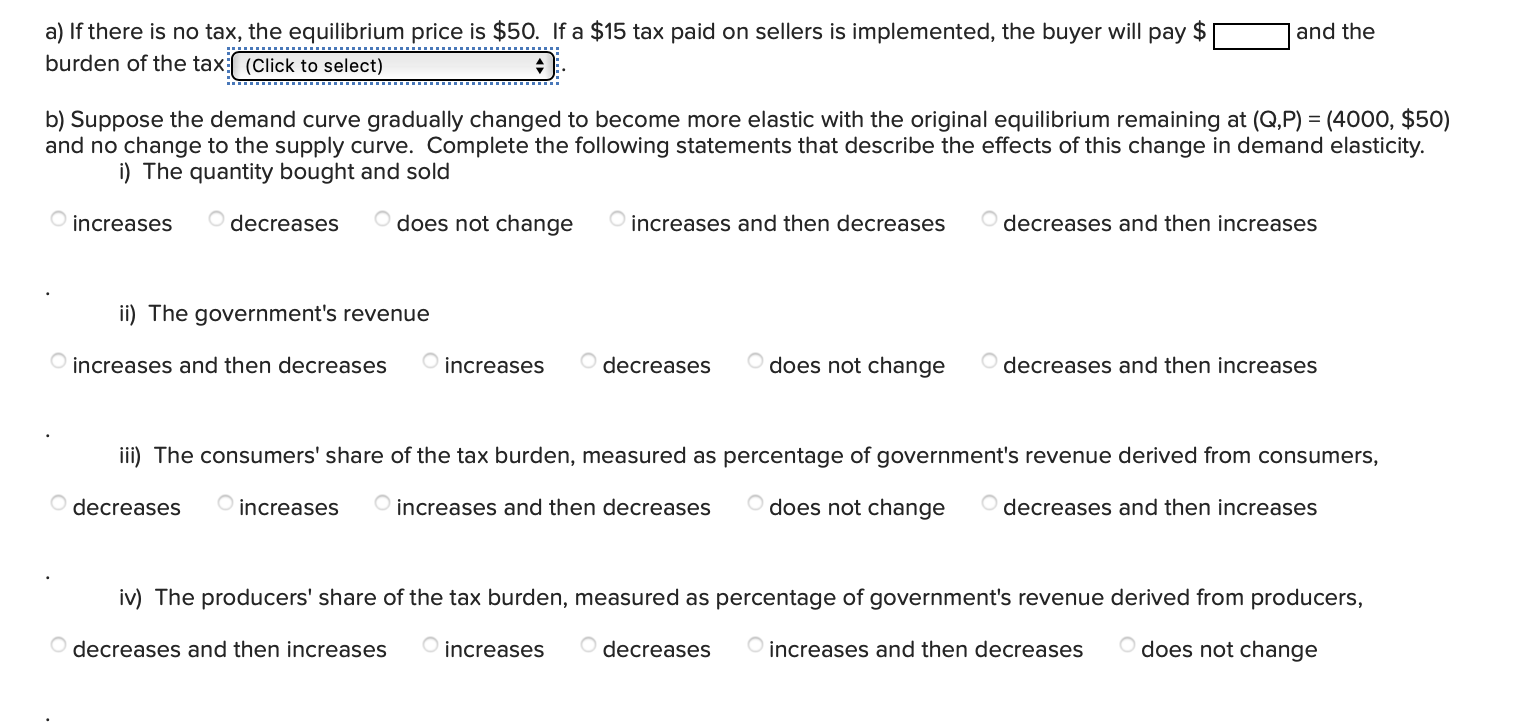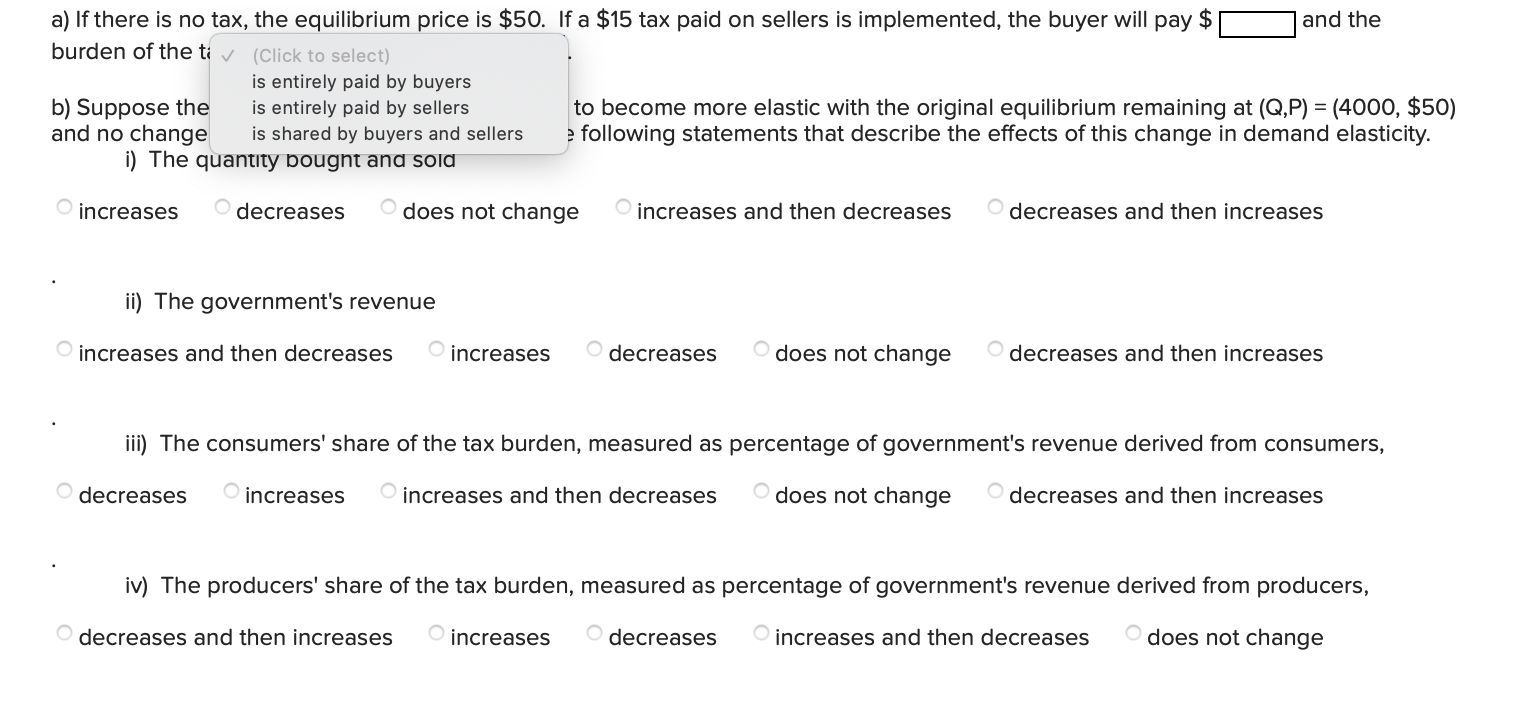help w/ 8
8 Refer to the interactive below: Tax Burden In. GRAPH Tax Burden : On SETTINGS Reset points Skipped ($) Price Tax imposed on: Supply Demand 90 $90.00 Excise Tax (0 - $20) 0.00 80 eBook 70 S Demand 60 Perfectly Relatively References Inelastic Elastic 50. . . .... . ... . . . . . .. Relatively Elastic 40 Supply 30 Less Perfectly $30.00 Elastic Elastic 20 Relatively Elastic 10 . . BEER CALCULATIONS 0 1.0 2.0 3.0 4.0 5.0 6.0 7.0 8.0 9.0 Quantity Price Paid Quantity (thousands per week) No Tax Burden on Burden on Tax Revenue Welfare Loss $50.00 4,000 the Consumer the Producer (Deadweight Loss) Tax Paid Tax Paid + With Tax $50.00 4,000 Instructions: Adjust the sliders so that the vertical intercept of the supply curve is $30 and the demand curve is perfectly inelastic. Click the Tax Burden switch above the graph to On. Make additional modifications to the interactive tool as indicated to answer the following questions.a) lfthere is no tax, the equilibrium price is $50. lfa $15 tax paid on sellers is implemented, the buyer will pay 35 |:| and the b) Suppose the demand curve gradually changed to become more elastic with the original equilibrium remaining at (OP) = (4000, $50) and no change to the supply curve. Complete the following statements that describe the effects of this change in demand elasticity. i) The quantity bought and sold increases decreases does not change increases and then decreases decreases and then increases ii) The government's revenue increases and then decreases increases decreases does not change decreases and then increases iii) The consumers' share of the tax burden, measured as percentage of government's revenue derived from consumers, decreases increases increases and then decreases does not change decreases and then increases iv) The producers' share of the tax burden, measured as percentage of government's revenue derived from producers, decreases and then increases increases decreases increases and then decreases does not change a) lfthere is no tag, the equilibrium price is $507.77 l'fa $15 tax paid on sellers is implemented, the buyer will pay $ |:| and the burden of the t v (Click to select) ' is entirely paid by buyers b) Suppose th is entirely paid by sellers to become more elastic with the original equilibrium remaining at (Q,P) = (4000, $50) and no change is shared by buyers and sellers ' following statements that describe the effects of this change in demand elasticity. i) The q'uamnyW' ' increases decreases does not change increases and then decreases decreases and then increases ii) The government's revenue increases and then decreases increases decreases does not change decreases and then increases iii) The consumers' share of the tax burden, measured as percentage of government's revenue derived from consumers, decreases increases increases and then decreases does not change decreases and then increases iv) The producers' share of the tax burden, measured as percentage of government's revenue derived from producers, decreases and then increases increases decreases increases and then decreases does not change









